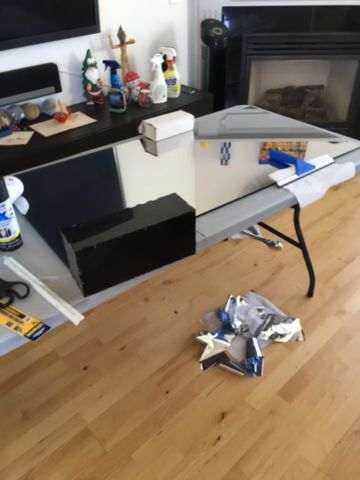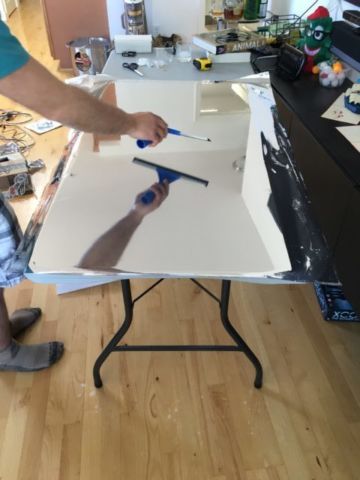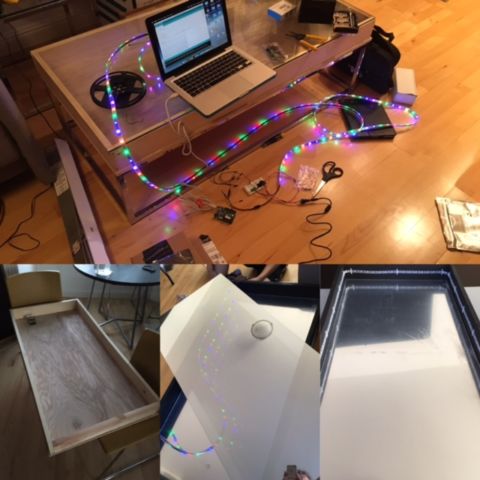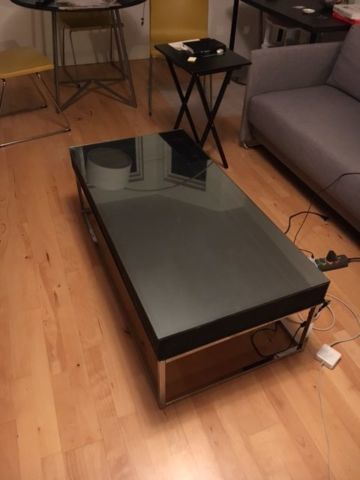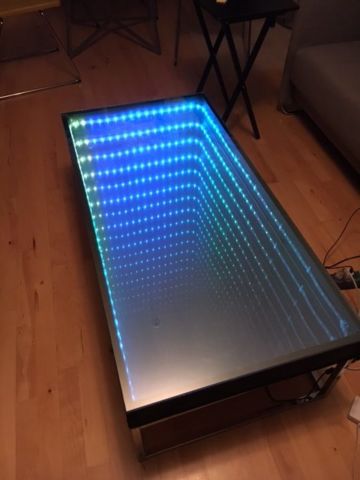Late last year, my friends and I went out to Audio, this club in SF. I was just entranced by the infinity mirror behind the DJ booth and became determined to make my own. I completed it in two major steps—first was the physical construction with basic light patterns, and second came the addition of a microphone for sound-reactivity.
Here’s a video of the project in it’s current state:
This project cost about $150 out of pocket (since I had a bunch of the materials already) and 15-ish hours on and off. My friend Ross and I did the majority of the physical build while he was visiting, and the project stayed in a working, but non-sound-reactive state for a few months until I found time to tweak the code and hook up the microphone properly.
Materials used:
- 1ea 2ft x 4ft Glass Coffee Table – a simple table we started with; it’s basically a metal frame with glass that sits directly on top.
- 1ea Arduino Duemilanove – old Arduino I had lying around
- 1pk Gila PRS361 Daytime Privacy Window Film – film used to convert our glass tabletop into a one-way mirror ($26)
- 1ea Gila Window Film Application Solution, 16 fl oz – this one bottle was more than enough for a table of our size ($3.50)
- 1ea Squeegee – this squeegee was actually very much needed to apply the film evenly ($5)
- 1ea WS2812B Individually Addressable LED Strip Light 5050 RGB SMD – this strip was pretty cheap and was super easy to use ($28)
- 1ea 5V 8A Power supply – the strip I bought required 9W/m and I’m powering 12ft of lights ($15)
- 1ea Adafruit Electret Microphone Amplifier – I ended up buying two of these because I accidentally fried one ($8)
- Acrylic mirror sheet ( x x .125”), $75 at TAP Plastics
- Plywood (2ft x 4ft x .25”), 2×4’s for frame – $20
- Matte black spray paint – $6
- Various mounting hardware, nails, wire, etc. – $10
The way this works is surprisingly simple–basically all you need to do is to mount LEDs between a mirror and a one-way mirror, and there are many ways to do this. All I did was the following:
- Measure existing coffee table, then build & paint a wooden box to fit on top of it
- Apply a one-way mirror film to the glass top, let it dry
- Put a regular mirror (I got a piece of lightweight mirrored acrylic cut to size) in the bottom of the box
- Test out LEDs, then mount them to the sides of the box
- Put the one way mirror on top of the box
- Wire LEDs to arduino, upload code, and plug in to enjoy 🙂
Build Photos
